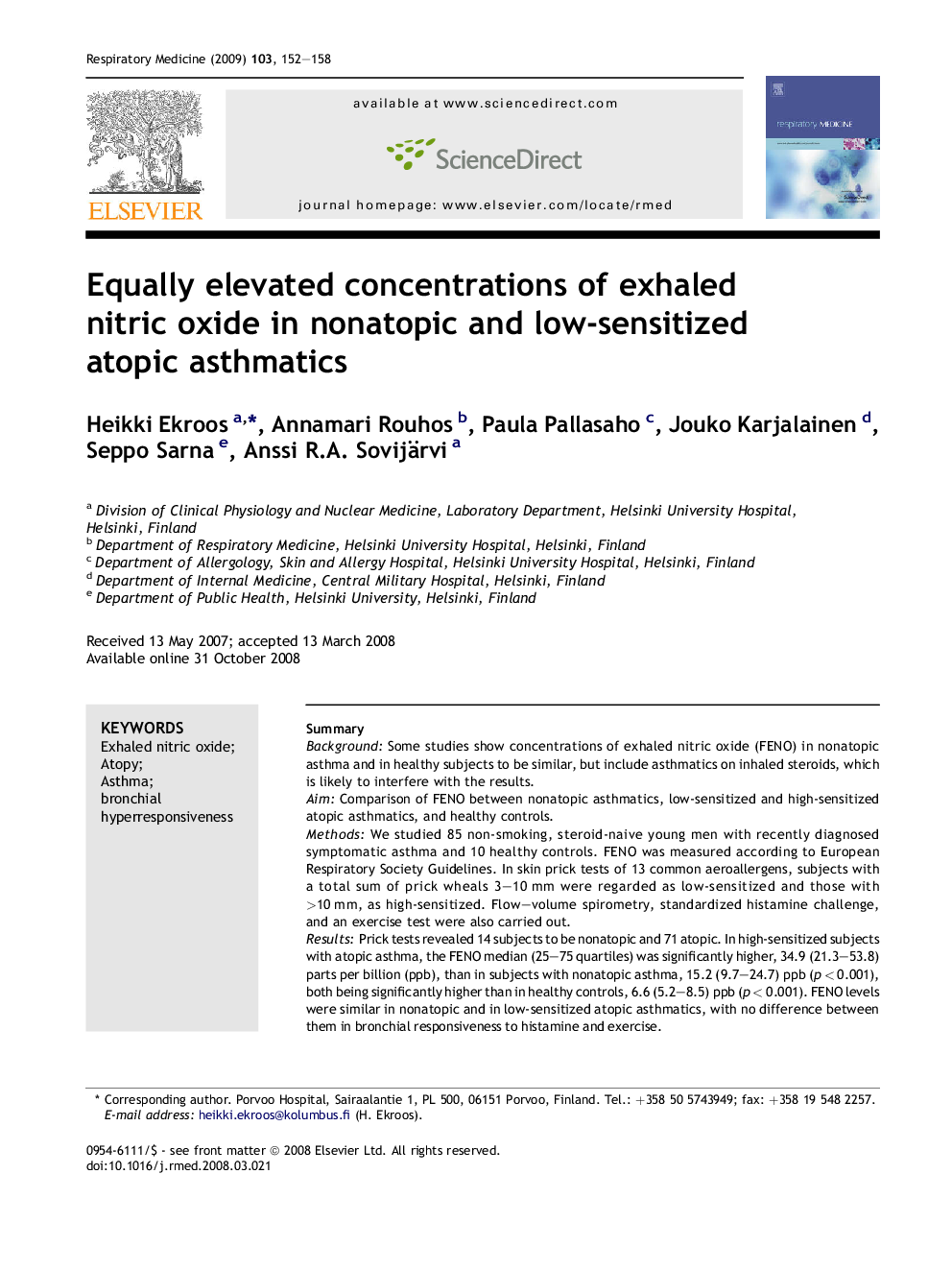| Article ID | Journal | Published Year | Pages | File Type |
|---|---|---|---|---|
| 4210997 | Respiratory Medicine | 2009 | 7 Pages |
SummaryBackgroundSome studies show concentrations of exhaled nitric oxide (FENO) in nonatopic asthma and in healthy subjects to be similar, but include asthmatics on inhaled steroids, which is likely to interfere with the results.AimComparison of FENO between nonatopic asthmatics, low-sensitized and high-sensitized atopic asthmatics, and healthy controls.MethodsWe studied 85 non-smoking, steroid-naive young men with recently diagnosed symptomatic asthma and 10 healthy controls. FENO was measured according to European Respiratory Society Guidelines. In skin prick tests of 13 common aeroallergens, subjects with a total sum of prick wheals 3–10 mm were regarded as low-sensitized and those with >10 mm, as high-sensitized. Flow–volume spirometry, standardized histamine challenge, and an exercise test were also carried out.ResultsPrick tests revealed 14 subjects to be nonatopic and 71 atopic. In high-sensitized subjects with atopic asthma, the FENO median (25–75 quartiles) was significantly higher, 34.9 (21.3–53.8) parts per billion (ppb), than in subjects with nonatopic asthma, 15.2 (9.7–24.7) ppb (p < 0.001), both being significantly higher than in healthy controls, 6.6 (5.2–8.5) ppb (p < 0.001). FENO levels were similar in nonatopic and in low-sensitized atopic asthmatics, with no difference between them in bronchial responsiveness to histamine and exercise.ConclusionAmong steroid-naive young male asthmatics, FENO was equally elevated in nonatopic asthma and in low-sensitized atopic asthma but lower than in those with high-sensitized atopic asthma. These differences in FENO between asthma groups parallel the differences in airway function disturbance in terms of responsiveness to histamine or exercise.
